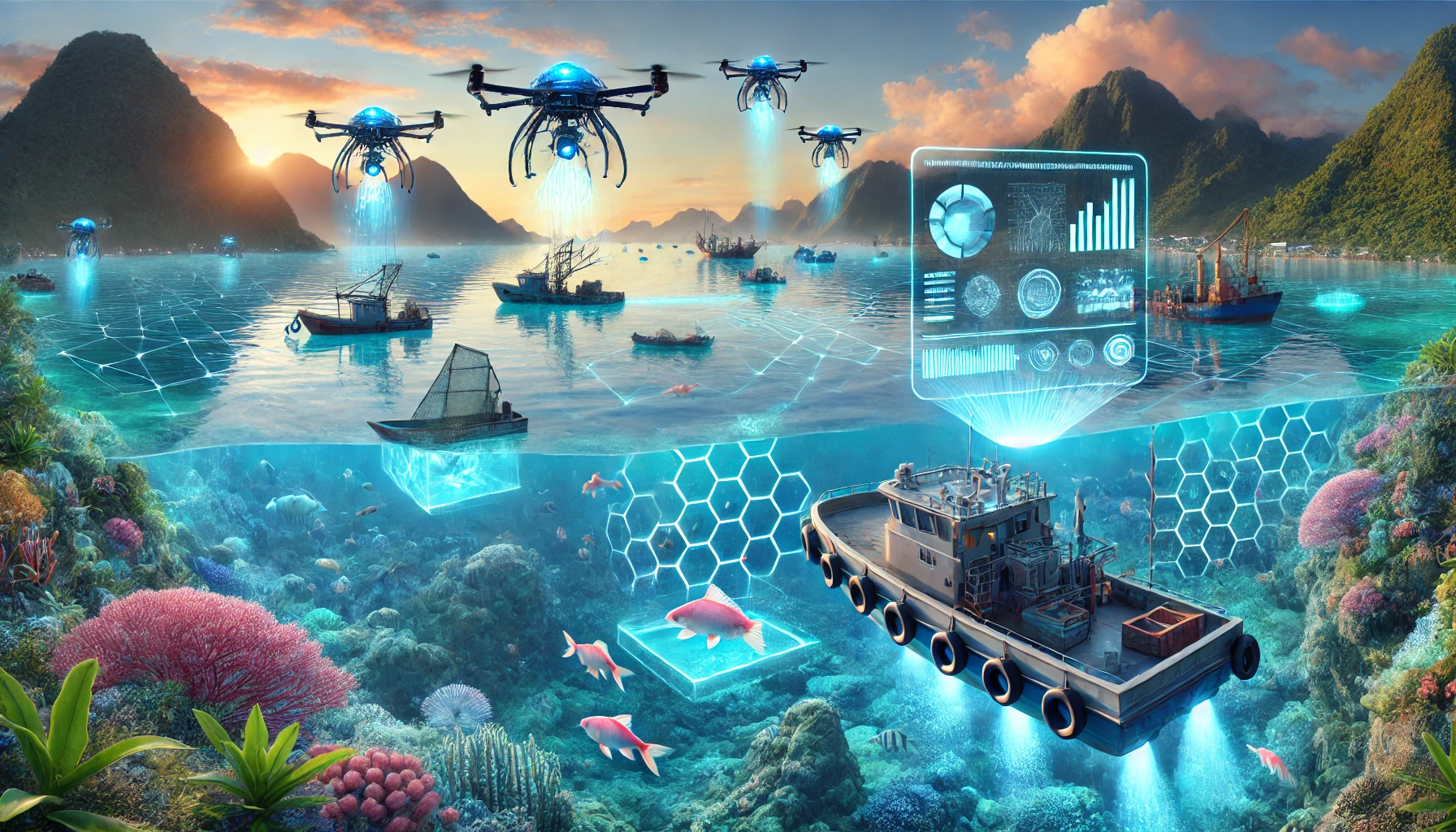Fisheries play a crucial role in global food security, economic stability, and ecological balance. However, overfishing, habitat destruction, and climate change pose significant challenges to their sustainability. Artificial General Intelligence (AGI) offers a transformative opportunity to optimize fisheries management, ensuring long-term sustainability and productivity.
The Role of AGI in Fisheries Management
AGI, with its ability to process vast datasets, identify patterns, and simulate complex systems, can revolutionize the way we manage fisheries. Here’s how:
- Real-Time Data Integration AGI can analyze diverse data sources, including satellite imagery, oceanographic data, and fishing activity logs, in real time. This allows for accurate monitoring of fish populations, migration patterns, and ecosystem health.
- Predictive Analytics By leveraging historical and real-time data, AGI can predict changes in fish stocks due to environmental factors or human activities. These insights help policymakers and fisheries managers make proactive decisions to prevent overfishing.
- Dynamic Quota Management Traditional fishing quotas are often based on outdated data. AGI can dynamically adjust quotas based on real-time stock assessments, ensuring sustainable harvest levels while maximizing economic returns.
- Combatting Illegal Fishing AGI-powered surveillance systems, including drones and satellite monitoring, can detect illegal, unreported, and unregulated (IUU) fishing activities. These systems provide actionable intelligence to authorities, enhancing enforcement efforts.
- Ecosystem-Based Management AGI can model entire marine ecosystems, identifying interdependencies between species and environmental variables. This holistic approach enables strategies that maintain biodiversity and ecosystem resilience.
- Climate Change Adaptation As oceans warm and habitats shift, AGI can forecast the impacts of climate change on fish stocks and recommend adaptive measures. These might include relocating fishing efforts or establishing new marine protected areas.
Benefits of AGI-Driven Fisheries Management
- Sustainability: Ensures fish stocks are maintained at healthy levels for future generations.
- Economic Growth: Supports stable and productive fisheries, benefiting coastal communities and the global seafood industry.
- Biodiversity Protection: Helps preserve marine ecosystems and their inhabitants.
- Transparency: Enhances data sharing and accountability among stakeholders.
Challenges and Ethical Considerations
While AGI offers immense potential, its implementation must address key challenges:
- Data Gaps: Reliable data collection in remote or under-monitored regions remains a hurdle.
- Equity: Management strategies should balance the needs of large-scale commercial operations and small-scale local fishers.
- Ethical Concerns: Ensuring AGI systems are transparent and free from biases is critical for fair governance.
Conclusion
By integrating AGI into fisheries management, we can tackle some of the most pressing challenges facing our oceans. Collaboration between governments, scientists, and industry stakeholders is essential to harness AGI’s full potential. With the right investments and ethical oversight, AGI could become a cornerstone of sustainable fisheries management, ensuring the health of our oceans for generations to come.
[SEO optimized]


